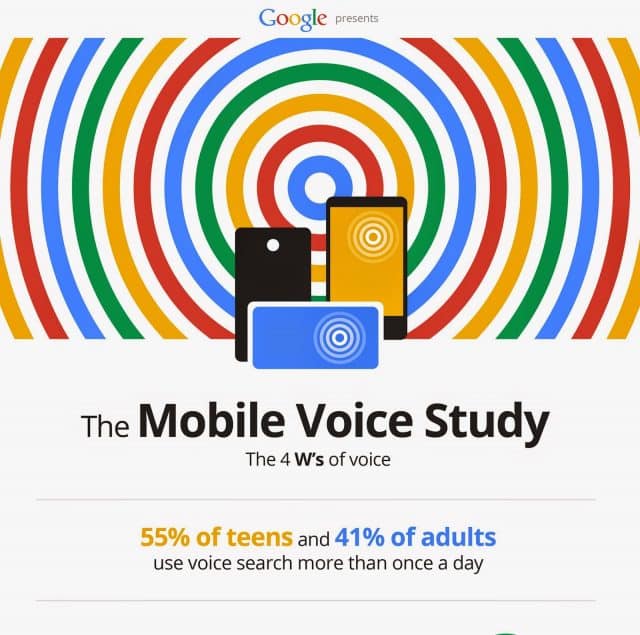In the famous words of the esteemed Ferris Bueller, “SEO moves pretty fast. If you don’t stop and look around once in a while, you could miss it.”
Okay, he might not have been talking about SEO, but the idiom still works.
With 2017 rolling to a close, it’s the perfect time to look ahead at what is to come in the new year because SEO does move fast and keeping up with the best practices and trends is important for staying competitive on SERPs in the coming new year and beyond.
We’ll take a look at each future trend and pay extra attention to how you can adapt to meet the new change.
This will help ensure that you not only have plenty of time to prepare for these new trends, but also the knowledge of how to meet these changes head on.
Trend #1: SERP Feature Panels Make Clicks On Organic Listings Scarce
If you need any proof of how quickly technology and SEO moves, just consider how search engine results pages themselves have evolved. Once upon a time, a Google SERP was just 10 blue links to the most algorithmically relevant websites.
Now, Google implements a number of SERP features, from featured snippets, related questions, Twitter feeds, reviews, knowledge panels and so on.
For searchers, these SERP features make the journey much easier; they can find lots of relevant information in neatly organized panels. However, these SERP features often have much higher CTRs than the normal, organic results.
One study found that organic CTRs fell 37% for rank 1 results due to SERP features. This presents a big SEO challenge. Luckily, that challenge is being met by today’s keyword research tools.
Many of these tools will allow you to track your target keywords and see which search terms trigger which SERP features. You’ll even be able to see which SERP features utilize your page.
With these insights, you can better structure your strategies to potentially squeeze ahead into certain feature panes. It may also be a good tactic to keep an eye on changes in SERP features.
Trend #2: Longer, In-Depth Content Is Key
Content has always been a huge determining factor of SEO. The earliest Google bots would roam pages and metatags to scan for keywords in the content.
This is still true, but Google’s page ranking systems are much more sophisticated today. Thus, instead of only crawling for content and keywords, Google is now focusing on context as well.
Ultimately, Google’s goal is to provide the best results for users. So, while being keyword-rich may have tricked the old Google bots, the newer methods aren’t easily fooled, especially their machine learning RankBrain system.
One of the important metrics that this search engine uses to rank pages is Dwell Time. This is how long a user stays on a page they’ve reached through the SERPs.
While RankBrain’s methods have largely remained a mystery, it has become clear that Dwell Time is an important factor. One research study investigated the average Dwell Times for top Google page results and found that 3 minutes and 10 seconds is a key benchmark that pages should strive for.
By producing longer, more detailed content, there’s not only a higher chance that you’ll answer any visitor’s question(s), but it also increases how long that individual is going to dwell on your page and thereby potentially raise your ranking.
A separate study took a look at word counts of published content and how the page ranked on Google and found that between 1950-2000 words was optimal and far outranked shorter blog content.
Trend #3: Google’s Mobile-First Approach To Indexing Is Coming
Around this time of last year, Google announced a big shift towards mobile-first indexing. This change is Google’s response to the fact that the majority of searches happen on mobile devices.
A mobile-first index means that Google is going to begin looking at the mobile-optimized versions of websites as the “real” site. In other words, Google is about to only be interested in your mobile website.
While this change hasn’t happened yet, it is coming and preparation is important. If you don’t already have a mobile-optimized webpage, then your site likely enjoys the esteemed company of the tyrannosaurus rex, the adelobasileus and the rest of the extinct, jurassic world.
That said, even if your site is mobile-friendly, that may not be enough to satisfy Google’s future mobile-first index.
The challenge is we don’t know a lot about how Google’s mobile indexing will work. But, there are a few initial first steps that should be taken.
First, make sure that all of your content is visible on mobile. If you have any ‘click to read more’ buttons, remove them because Google weighs that content less than the non-hidden. These became popular on mobile sites because it was easier to scroll through a number of different topics.
Second, many mobile sites use the m.website format for their mobile page links. These domains should be migrated to a full, responsive website before the mobile-first index switch begins.
This will allow Google to re-index your pages at the switch faster because there isn’t anything new to index; it will make a note that your website is mobile-friendly because it is responsive and then move on.
Lastly, really take a look at each page on a mobile device. Just because it looks great, doesn’t always mean it functions great also. If your mobile pages have poor functionality, users won’t spend those important 3 minutes and 10 seconds.
Trend #4: Voice Search Is Here
Google’s Mobile Voice Study: The 4 W’s of Voice found that 55% of teens and 41% of adults use voice search at least once a day and that voice searches account for 20% of all mobile search queries.
These figures will continue to rise as we get more comfortable talking to our phones. And, that’s exactly the challenge; it isn’t a matter of voice search getting more popular, but that we speak to our phones differently than we type in search boxes.
The main difference between the two is that people performing voice searches almost exclusively ask in a question: ‘How old is Mike Tyson?’ or, ‘What time does the Packers-Steelers game start?’
When we’re typing into a search box however, we only sometimes use a question format. The same searches might be typed as simply: ‘Mike Tyson age’ or ‘GB PIT gametime.’
This presents a challenge when crafting content. With more people using voice and asking full questions, there may be an even greater rise in content that is developed in question-answer format.
Conclusions
A new year is a clean slate for new goals and progress to be made, but it is also an important time to look ahead and see what’s coming.
SEO is changing dramatically thanks to how individuals are searching and using their search results. The impact of many of these changes are already being felt and will continue to change the SEO world long after 2018 is in the record books.
The sooner digital marketers can begin making necessary adjustments to their tactics and strategies, the better they will be prepared for the new year and the challenges yet to come.


